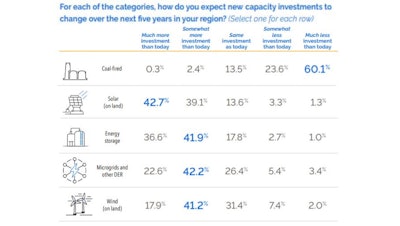
 Black & Veatch
Black & Veatch
“We are an employee-owned company, and we do not make decisions based on what the market wants to hear, or how the market will react,” said Mario Azar, president of Black & Veatch’s power business, in an interview with Powermag.com. “It’s really centered around our values and our future. It was us, telling ourselves, did we really want to be part of that [coal] legacy anymore?”
Black & Veatch says the global power industry is in transition and needs to accelerate the path to net zero as many companies, communities and stakeholders commit to lower carbon emissions. Case in point, GE declared it would exit the new-build coal power market about a month before B&V’s announcement.
“The transition away from any coal-related activity is about our commitment as a company to sustainability and accelerating our efforts to lead the emerging carbon-free energy future,” said Steve Edwards, company CEO.
For the past decade B&V has been shifting its focus to renewable energy and energy storage technologies, advancing deployment of hydrogen as a carbon-free fuel and developing technologies for carbon capture. The company’s power delivery portfolio is also investing in grid modernization solutions to accommodate a diversifying power-generation landscape of base load and intermittent sources.
The company will fulfill current project commitments to completion. Their focus will be on supporting clients as they transition to balanced energy portfolios with cleaner energy sources, and towards achieving decarbonization and sustainability goals.
“At the same time the industry wrestles with its transformation, global communities continue to have demand for safe, reliable and cost-effective power,” said Azar. “These forces create a delicate balance that requires deep engineering and technology expertise to help guide the complex transition of power generation and delivery infrastructure.”
For more information about the energy transformation, Black & Veatch’s new 2020 Strategic Directions: Electric Report details an industry focused on pursuit of a lower-carbon footprint and integration of renewable energy into the grid to ensure increased resilience and reliability.
The company’s survey of more than 600 leaders in the industry offers deep perspective on a power sector where “new energy” in the form of renewables drawn from solar and wind, both on land and increasingly offshore, continues to accelerate.
More than three-quarters of respondents to the company's survey indicated that they are devoting more of their capital spending to clean energy.
Eight of 10 respondents forecast that over the next five years, more of their spending in new generation capacity will be directed at solar arrays on land, followed closely by energy storage and eventually microgrids and other distributed energy resources (DERs).


















